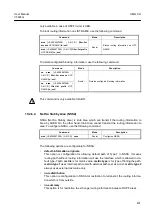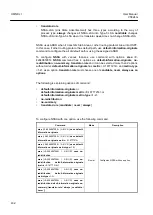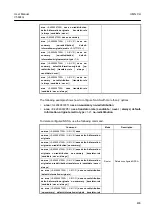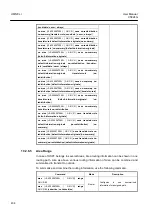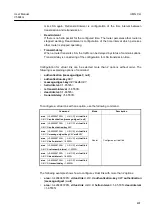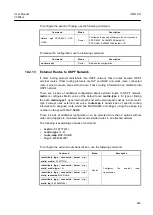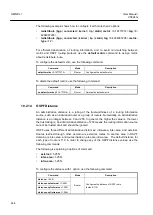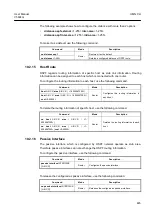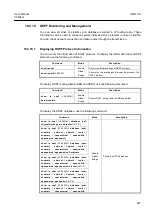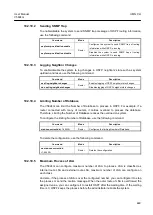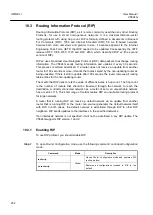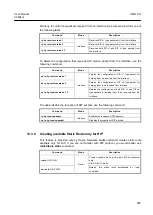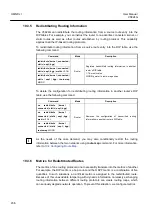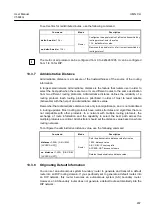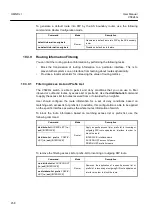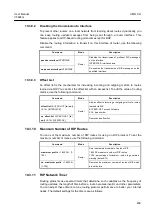
User Manual
UMN:CLI
V5824G
445
The following example shows how to configure the distance with more than 2 options:
•
distance ospf
external
<1-255>
inter-area
<1-255>
•
distance ospf
inter-area
<1-255>
intra-area
<1-255>
To make it as a default, use the following command.
Command
Mode
Description
no distance ospf
Router
Restores it as the default.
no distance
<1-255>
Deletes a configured distance of OSPF route.
10.2.15
Host Route
OSPF regards routing information of specific host as stub link information. Routing
information can be assigned to each host which is connected with one router.
To configure the routing information to each host, use the following command.
Command
Mode
Description
host
A.B.C.D
area
{
A.B.C.D
| <1-4294967295>}
Router
Configures the routing information to
each host.
host
A.B.C.D
area
{
A.B.C.D
| <1-4294967295>}
cost
<0-65535>
To delete the routing information of specific host, use the following command.
Command
Mode
Description
no host
A.B.C.D
area
{
A.B.C.D
| <1-
4294967295>}
Router
Deletes the routing information to each
host.
no host
A.B.C.D
area
{
A.B.C.D
| <1-
4294967295>}
cost
<0-65535>
10.2.16
Passive Interface
The passive interface which is configured by OSPF network operate as stub area.
Therefore passive interface can not exchange the OSPF routing information.
To configure the passive interface, use the following command.
Command
Mode
Description
passive-interface
INTERFACE
[
A.B.C.D
]
Router
Configures the passive interface.
To release the configured as passive interface, use the following command.
Command
Mode
Description
no passive-interface
INTERFACE
[
A.B.C.D
]
Router
Releases the configured as passive interface.

